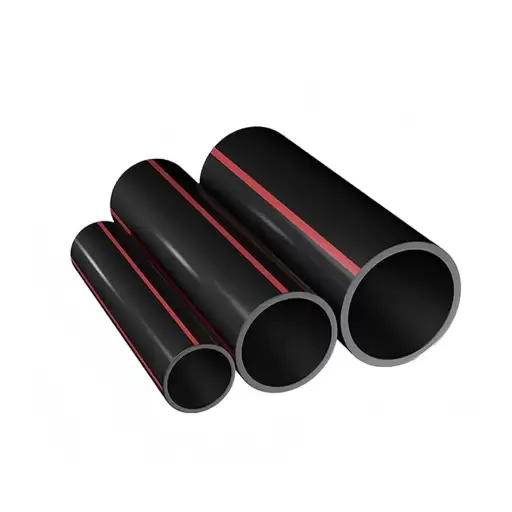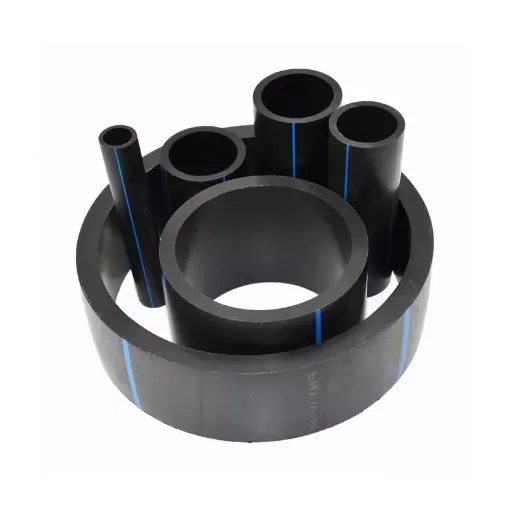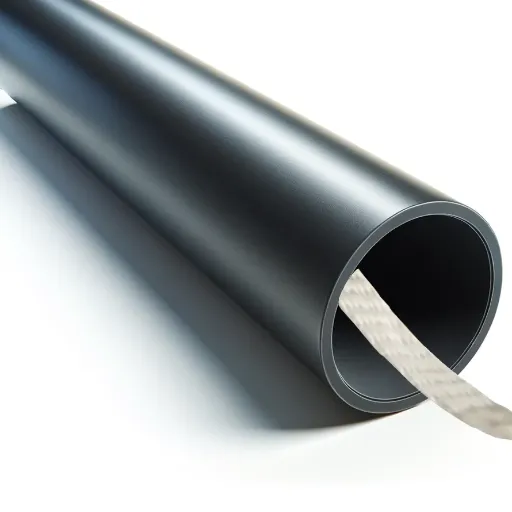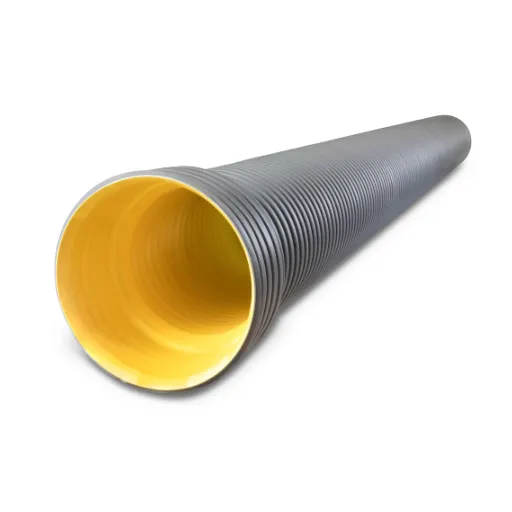Proper pressure testing is critical to ensuring the safety, performance, and longevity of High-Density Polyethylene (HDPE) piping systems. Whether you’re working on a municipal water supply project, an industrial application, or any other infrastructure project, pressure testing validates the integrity of the installed piping and guarantees compliance with key industry standards. This guide provides a detailed and systematic exploration of the pressure testing process for HDPE pipes, covering essential procedures, best practices, and common pitfalls to avoid. By the end of this article, you’ll have the foundational knowledge and confidence to execute pressure testing effectively, safeguarding your projects against leaks, failures, and operational inefficiencies.
What is Hydrostatic Pressure Testing for HDPE Pipes?
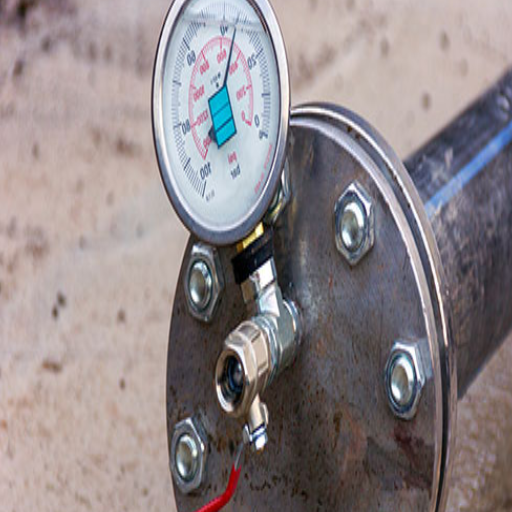
Introduction to Hydrostatic Testing
Hydrostatic pressure testing is a very important step when verifying the integrity, safety, and operational reliability of HDPE (High-Density Polyethylene) pipes. This non-destructive test procedure consists of filling the pipe with liquid (usually water) and applying pressure that is higher than its operational value. This test aims to confirm that the pipe can accurately maintain the predetermined levels of pressure without leaking or breaking.
The pipe is checked to make sure it is properly sealed, then it is slowly pressurized to a specific predetermined level according to the testing specifications and application. The pressure is maintained for a specific timeframe, allowing the technicians to look for any noticeable drop in pressure or leakage. Any change in pressure signifies a possible defect that must be resolved prior to system approval.
Hydrostatic pressure testing is critical in circumstances where there is a transfer of a fluid or gas that is under high pressure, for example, in water supply systems, industrial pipelines, and even in construction works. Testing can reveal existing flaws in the material, weak connections, and installation mistakes, which may result in failures in operation. Implementing this procedure consistently enhances the reliability, safety, and efficacy of HDPE piping systems while also verifying their value as long-lasting solutions for various engineering projects.
Why Use Hydrostatic Testing for Polyethylene Pipe?
Hydrostatic testing is a crucial procedure when it comes to evaluating the sensitivity and dependability of Polyethylene (PE) pipes. This process consists of filling the pipe with a liquid (usually water), pressurizing it to a predetermined level, and then checking for any leaks, deformations, or failures. By simulating the actual conditions the pipe will encounter during use, hydrostatic testing assures the material’s quality and construction as well as safety and performance standards.
One of the main concerns during testing is making sure there is no flaw detection. These can be easily categorized as manufacturing inaccuracies, improper fitting of pipes, and weak joints within the pipe that can potentially lead to its malfunction during standard operational activities. Detection at early stages is extremely beneficial when it comes to eliminating expensive repairs, service breakdowns, and safety risks.
Similarly, hydrostatic testing is important in increasing the lifespan of a pipeline system. This process supports a system’s polyethylene pipe’s structural integrity to lessen the chances of failure, increasing the overall dependability of the system. Hydrostatic testing increases the operational and reliability confidence of PE pipes in water supply and industrial application pipelines. This makes it critical in the construction and upkeep of infrastructure.
Understanding Test Pressure and Test Method
The hydrostatic test pressure is a crucial criterion for assessing the strength and leakage integrity of polyethylene (PE) pipes under stress, as it checks the overload condition of the pipe. It is usually derived from a specific percentage of the rated pressure class of the pipe, guaranteeing that the pressure imposed during testing exceeds the boundaries of standard operating conditions. In most cases, industry practices like ASTM and ISO recommend setting the test pressure within the range of 1.25 to 1.5 times the maximum allowable operating pressure (MAOP). This overpressurization is important to fully evaluate the pipe’s safety margins by simulating extreme scenarios.
The test method includes filling the pipeline with water under pressure to remove pockets of trapped air, ensuring full stress relaxation and an unobstructed uniform stress profile throughout the pipeline. Upon reaching the desired test pressure, it is maintained for a certain duration defined by the application, which is often between 2 to 8 hours, depending on the pipe material, its use case, and associated regulatory obligations. During that period, inspectors watching the monitored system need to evaluate pressure stability within defined limits and identify if any leak or structural weakness occurs. Joint failure, cracks, or other issues like defects in the pipe walls may precipitate a drop in pressure in the case of open systems.
For obtaining results that are reliable, following proper calibrated equipment and standardized procedures is a must. The testing conditions also need to be properly controlled, which includes factors such as heating or cooling and expansion of materials. Following these steps not only helps in collecting important information about the efficiency of the pipeline, but also helps companies comply with the legal requirements which deem these pipelines as okay for use. Therefore, proper understanding and application of methods and test pressure are crucial for achieving operational safety and integrity within the pipelines.
How to Conduct a Pressure Test on HDPE Pipe?
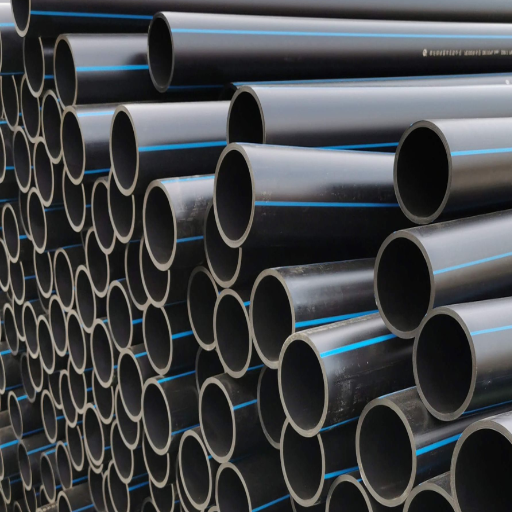
Preparing the Pipeline for HDPE Pipe Testing
To ensure that the correct results are obtained while avoiding damage to the system, prepping before performing a test on HDPE (High Density Polyethylene) pipes is very crucial. For starters, the pipeline should be fully cleaned of any contaminants, waste, or other materials that could block the flow of water during the test, pressure reading. In context of operations as well as compliance with regulations, it is recommended to flush with a suitable cleaning solvent.
Once the pipeline is neat and clean, close off the test section circumferentially using either mechanical end caps or flange adapters. The end caps should be able to support the required test pressure. Before installation, these fittings also need a check for any defects or deformation. Moreover, certain drains and vents can be controlled, sealed, and then filled with gas and air during the testing stage.
Throughout the entire length of the pipeline, the supports and anchors must be properly aligned so that no inconsistencies arise with the test results, as they will clash with anything rigged. With poor alignment, structural stress alongside inaccurate test results is bound to happen. If need be, additional supports or restraints should be set up to manage possible thermal expansion and contraction.
Lastly, a pre-test inspection should take place with the recording of the pipeline as well as the test setup’s condition. Confirming gauge calibration, ensuring all connections are verified leak-tight, and confirming compliance with the provisions of ASTM F2164 or other applicable standards is also important. These prerequisites guarantee that test conditions will be consistent, dependable, and conform to appropriate, engineered criteria for the specific industry.
Executing the Test Procedure
The execution of the hydrostatic testing procedure begins by filling the pipeline with water to get rid of any air pockets. To maintain the integrity of the pipeline, water should be prevented from causing pressure surges when filling the pipeline. After filling, there is an initial check for leakage at lower pressures.
The next step involves bringing the system to the required pressure, which is set for the test, which should be done within the limits of the maximum allowable operational pressure (MAOP) of the pipeline according to ASTM F2164 or other similar regulations. The pressure in the system has to be held constant for a specific period of time, referred to as the stabilization period, which ranges from 30 minutes to 1 hour, depending on the setting of the system and required thermal equilibrium.
The on-hold pressure should only be released according to the timeframe set in the testing plan while using calibrated pressure gauges for precise monitoring. Permissible limits set on drop in pressure or leak observation indicate failure, thereby requiring corrective action and retesting. Collecting all pressure data within the system makes tracking easier while meeting regulatory compliance.
Evaluating Pressure Drop During the Test Phase
Evaluating the pressure drop accurately during the test phase is important with regard to the system’s integrity and for identifying possible leak points. In order to monitor pressure changes in real-time, data acquisition systems with high-precision sensors are required. These systems must capture pressure readings at specified intervals to create a clear profile of the pressure fluctuations.
Changes in ambient temperature, system material’s thermal expansion, and any unauthorized changes to the testing area impact the pressure drop. A more detailed approach needs to be undertaken in order to address these variables so that any pressure reduction observed is due to the actual system changes.
Advanced computational techniques, such as fluid dynamics simulations, offer effective assistance when identifying anomalies by modeling the behavior of the pressurised medium to find failure points in the system. Indirect observation techniques to analyze pressure data make use of ultrasonic scanners or acoustic leak detectors, which directly identify leaks and therefore make the process more efficient.
Key Considerations for Testing HDPE Pipes
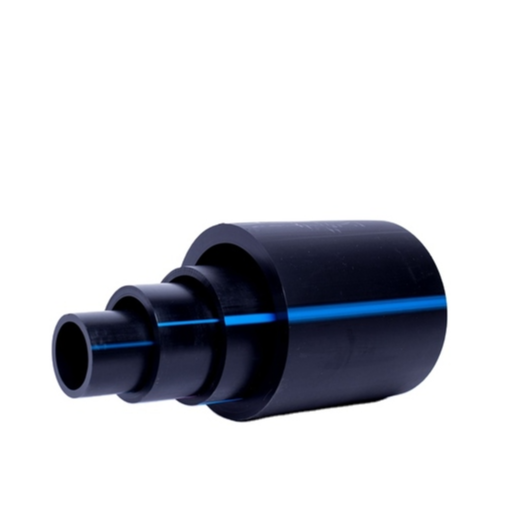
Determining Design Pressure and Pressure Rating
The design pressure and pressure rating of HDPE pipes, as part of the High Density Polyethylene Piping System, are very important for safe system operation, functional effectiveness, and durability. Sustained Internal Pressure (SIP) is the upper limit of pressure that the piping system can support without failure during typical conditions of operation. Operating temperature, pipe size (diameter), material grade, and wall thickness are some factors that will constrain this value.
Pressure rating, as defined, typically refers to the upper limit of pressure of a given temperature (band) that the pipe can support. For HDPE pipes, the pressure rating needs to include the material’s stress relaxation characteristics with time. Recent electro-hydraulic technologies utilize strategies like Minimum Required Strength (MRS) classification, which determines long-term pressure endurance capabilities specified.
In addition, it is important to consider temperature derating factors because high temperatures lower the piping’s pressure capacity. For systems consistently operating above 20 degrees Celsius, specific derating multipliers must be added to further lower the pressure rating. These calculations, in turn, greatly add to operational safety, as well as compliance with legal guidelines.
Using relevant data to calculate these factors, in combination with published standards, prevents system failures and maximizes the service life of HDPE piping.
Managing Leakage and Leak Tests
An understanding of the mechanical leakage boundaries combined with a properly organized testing program enables the most effective management of leakages in HDPE piping systems. Leak testing can come in various forms, such as hydrostatic or pneumatic tests, and is essentially an assessment of the piping system’s integrity. An example of such an assessment is hydrostatic testing, which requires filling the specified system with water and monitoring pressure—if there are pressure drops, then there is a possibility of external leakage or internal defects. Compared to other types of tests, pneumatic testing is more uncommon due to its safety precautions, but it achieves similar objectives by using compressed gas.
There is an increasing use of digital pressure sensors, which enhance accuracy in leak detection. Such advanced techniques allow for the prompt detection of the problem before it escalates into a disaster. An example of this technology includes IoT-enabled sensors, which can be integrated into systems and monitor conditions of the system throughout, providing alerts for a pressure drop, which suggests leakage. Such modern-day technologies have not only boosted accuracy but also improved the maintenance predictive standards.
The procedures set forth by ASTM F2164 and ISO 4437 highlight the necessary steps to be taken during testing for safety and compliance purposes. Following these procedures, along with meticulous record-keeping of test results, is essential for maintenance strategy formulation and legal compliance document submissions. In integrating advanced leak detection measures with proactive maintenance strategies, implementing strong tracking and monitoring systems sharpens system durability while minimizing the chances of operational interruptions.
Common Challenges in HDPE Pipe Testing
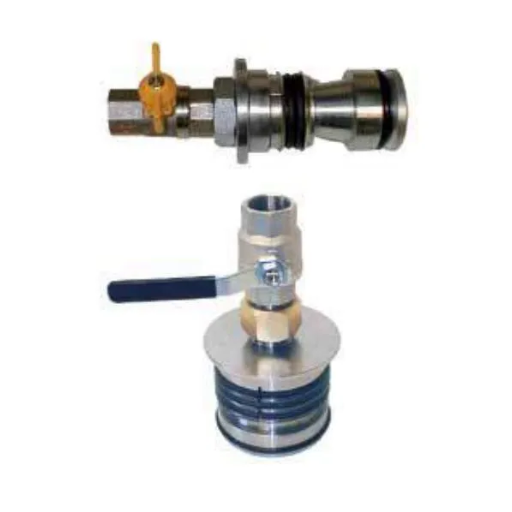
Addressing Pressure Leak Issues
Dealing with challenges like pressure leaks in HDPE pipelines can be critical for the integrity and efficiency of pipeline operations. Their root cause often lies in the manufacturing process, inappropriate joint fusion, or external damage inflicted on the pipe surface. To deal with such problems, sophisticated diagnostic techniques are applied, such as acoustic emission testing, pressure decay testing, and electronic leak detection systems.
Acoustic emission testing is excellent for monitoring high-stress wave propagation within the pipe structure. The monitoring allows for the identification of possible weak points or cracks. On the other hand, pressure decay testing provides a more quantitative approach for measuring loss of pressure with time, thereby indicating the presence of a leak. Besides, electronically equipped wireless sensors provide real-time information on pressure change, which allows for quicker response time and better proactive monitoring.
For control of leak issues, stringent measures for quality control during the installation and manufacturing stages are highly recommended. Moreover, the application of protective coatings or sleeves around the pipeline helps minimize damage from environmental effects like soil movement and chemical damage.
Smart monitoring systems with IoT technology and regular pressure checking schedules facilitate more accurate early detection. These preventive measures not only cut down repair costs but also help in improving the total lifespan of HDPE systems, making them reliable for industrial and municipal purposes.
Handling Pipe and Fittings during Testing of HDPE
Pipes and fittings usage, as well as operational procedures, must be followed to protect the system’s integrity throughout testing intervals. Any handling of the pipes or fittings may inflict physical damage that could impact result accuracy, and in extreme situations, system safety. It is of utmost importance that every handling step is performed as per relevant guidelines, including ASTM F2619 or ISO 4427, to avoid exceeding wear thresholds or causing internal structural damage.
During testing, checks should be made for proper installation of all fittings and interconnecting pipes to ensure no cracks, deformation, or any other suspicious markings that suggest contamination are present. Non-compliant cutback at the joints must be free from bulk particles or remnants of cleaning subassemblies without system contamination; otherwise, leakage or uncalibrated pressure readings may be captured, leading to unreliable conclusions. Dragging pipes across rugged terrain or dropping fittings from a height may result in the creation of microfractures that further weaken the material.
Moreover, to avoid any impact on performance, HDPE pipes should also be kept in dry shade before use to prevent damage from UV radiation. In the case that thermal expansion is an issue—usually encountered in high-pressure contexts—proportional measures like anchoring and incremental stress evaluation should be taken to improve system function under test conditions. Following these specific steps provides the user with the confidence that the testing procedures will indeed confirm the unparalleled operational and enduring strength of the HDPE materials.
Ensuring Accurate Test Duration and Water Pressure
Control of test durations and water pressure in system evaluations of HDPE necessitates precision for achieving reproducible results. It is also crucial to follow the timing requirements specified in ISO 4427 and ASTM D2837, which establish timing brackets relative to the test pressure and classification of the pipe material. Any breach of these standards may create gaps in material performance evaluations regarding its enduring resilience in designated applications or its longevity projection.
Water pressure, for example, needs to be calibrated through high-accuracy manometers to ensure it fulfills the prerequisites of the given test type. Pressure changes, for example, may cause erroneous results and unequal stress distribution over a pipe’s structural elements. Automated systems, such as pressure regulation devices with real-time telemetry that eliminate the risk of variable pressure buildup up are recommended for these purposes so that systemic pressure remains unchanged throughout the entire test cycle.
The incorporation of data acquisition systems can further measure and improve result accuracy. These systems enable the real-time logging of changes in pressure, temperature, and even detectable deformation of the HDPE material. Following the described procedures while using modern technologies enables operators to maintain result consistency and integrity, and at the same time, offer dependable data on the exploration of HDPE systems’ performance limits.
Benefits of Pressure Testing HDPE Pipelines
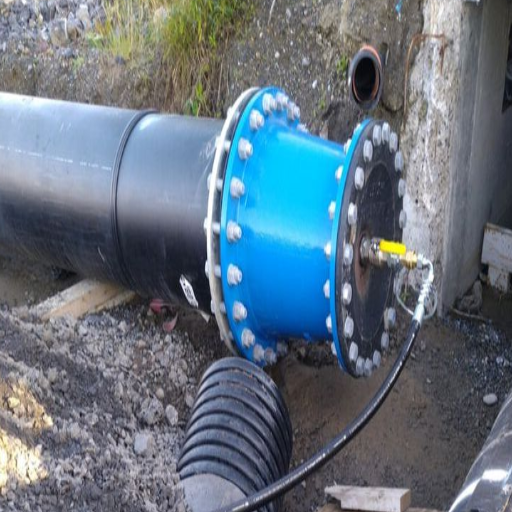
Ensuring Pipeline Integrity
Pressure testing is one of the key methods used to determine the adequacy of High-Density Polyethylene (HDPE) pipelines. Operators can find critical flaws, which might be micro-cracks, weld defects, or weak links in the subsystem, by stressing the pipelines to greater than normal operational pressure conditions. The process assists in solving challenges before the emergency stage arises while also quantitatively providing data regarding the overload capacity of the pipeline. Comprehensive testing plans help reduce the chances of a catastrophic failure that may incur expensive downtime, environmentally unsafe conditions, or potentially endanger other people present on the site.
With the addition of new sophisticated supervision technologies, modern methods for pressure testing have been advanced tremendously. In addition to that, modern attention-grabbing sensors enable real-time monitoring, which is critical in measuring internal pipeline pressure, temperature changes, and even strain at different sections of the line. This level of detail provides a better understanding of the stress performance of the pipeline, making the evaluation process more reliable. Captured data from testing tends to be saved for further analysis, enabling the capture of maintenance strategies through trend detection. With the addition of automated data-capturing devices, the reliability of results continues to improve as manual errors are diminished.
Moreover, it serves as an integral component of the compliance requirements and practices within a certain industry. Regulatory authorities from the oil and gas as well as the water distribution industries enforce comprehensive pressure testing protocols aimed at public safety and operational efficiency. Such testing validates compliance with public regulations, safeguards contractor trust, and attests to the HDPE pipeline system’s lifespan and strength. Stakeholder confidence is further bolstered by trust in reliable testing outcomes and proven self-regulation. By implementing advanced techniques, prudent testing, and mitigation strategies for repair cost failures and defaults, operators can maximize system reliability while minimizing costs.
Improving HDPE Pipe Performance
The systematic procedure for HDPE pipelines’ improvement revolves around the incorporation of new technologies, appropriate material choices, and industry compliance. The following five strategies will improve overall system reliability, safety, and efficiency:
- Material Selection and Quality Control
Procurement of specially graded HDPE will alleviate environmental stress cracking phenomena and perform best over time. Assuring consistency in material quality through regular checks, as outlined in ISO 4427, undergoing standardization for plastic piping systems, will help in achieving these goals.
- Advanced Jointing Techniques
Joint failures can be avoided through correct fusion techniques such as butt fusion and electrofusion. According to some studies, the ultimate tensile strengths that can be achieved in properly fused joints are almost parallel to that of the pipe material, which greatly diminishes the chances of leakage or disconnection under stress.
- Hydraulic Design Optimization
Analyzing the flow rate, diameter of the pipe, and roughness of the internal surface of the pipe for fluid transport aids in designing the pipeline. As an example, the friction coefficient for HDPE pipes is low, with the value of 150 for Hazen-Williams C-factor, thus increasing flow efficiency as well as decreasing the cost of energy required for pumping.
- Scheduled Maintenance and Non-Destructive Testing (NDT)
Periodic NDT examinations, like ultrasonic and radiographic inspections, allow for defects and deterioration to be identified at the earliest stages. Such actions are predicted to increase the operational longevity of the system by as much as 25–30% if coupled with a proactive maintenance schedule.
- External and Internal Protective Measures
Coatings and liners designed to protect pipes can help reduce the chance of abrasion and chemical corrosion. For instance, some industrial plumbing and sewage grade pipes have external layers internally coated, making them well protected from aggressive substances.
Implementing these strategies enables operators to make the most out of HDPE pipelines while significantly ensuring operational success and unparalleled reliability.
Long-Term Reliability of HDPE Pressure Pipe
The durability of HDPE pressure pipe is a result of its intrinsic material properties, coupled with the tremendous innovations in manufacturing, as well as installation techniques. Furthermore, HDPE is considered to have a high impact resistance and flexibility. This means it performs commendably under a wide range of pressure conditions without the threat of cracking or degradation. Furthermore, its resistance to high and low temperatures, chemical corrosion, and immunity make it dependable for systems with industrial-grade requirements.
Another factor influencing the lifespan of HDPE pressure pipes is their resistance to environmental and operational stress. The material demonstrates great resistance against slow crack growth (SCG) and rapid crack propagation (RCP), which are two failure modes that can pose peril to other materials. Moreover, these pipes possess excellent fusion weldability, which permits gaps to be altered into seams, thereby creating joints within the pipework that are devoid of leaks to boost the framework. Apart from that, HDPE pipes come with UV stabilizers that allow them to withstand harsh plastic deformation due to long periods of direct sunlight.
To the best of my knowledge and experience, achieving the correct installation, periodic maintenance, and attending to site-specific factors such as soil type and operating pressures is critical for achieving the long-term functionality of HDPE pipelines. Operators can deploy high-performing HDPE pipelines and systems for decades across a variety of demanding applications if the protective techniques of modern liners and coatings are merged with the machinery’s HDPE material’s durability.
References
Frequently Asked Questions (FAQ)
Q: What is the purpose of pressure testing for HDPE pipes?
A: Pressure testing of HDPE pipes is essential to ensure the integrity and reliability of the piping system. It helps in identifying leaks, weaknesses, or defects in the pipe, ensuring the longevity of piping systems and their safe operation.
Q: What standards are used for pressure testing of polyethylene pipes?
A: The testing of polyethylene pipes, including HDPE, typically follows standards like ASTM F2786, which provides guidelines for conducting pressure tests to ensure the performance and safety of the piping systems.
Q: How does pipe flexibility affect pressure testing?
A: The flexibility of HDPE pipes is an important factor in pressure testing, as it measures the pipe’s ability to withstand pressure without deforming. This flexibility is critical in ensuring that the pipes can handle various stressors in field testing environments.
Q: What is the significance of the test phase pressure in HDPE pipe testing?
A: The test phase pressure is crucial in pressure testing as it determines the maximum pressure the pipe can withstand during the test period. It is typically set at a specific level, such as 10 psi above the operating pressure, to ensure the pipe’s durability and safety.
Q: How is make-up water used during pressure testing?
A: Make-up water is added to the system during pressure testing to maintain the required test pressure, compensating for any minor leaks or volume changes due to pipe expansion or contraction.
Q: What role does hydro testing play in the testing of PE pipes?
A: Hydro testing is a method used in the testing of PE pipes to verify their integrity by filling and pressurizing the system with water. This test primarily puts the pipes under pressure to identify any potential leaks or weaknesses.
Q: Why is field testing primarily conducted on HDPE pipes?
A: Field testing is primarily conducted on HDPE pipes to assess their performance under actual operating conditions. This type of testing ensures that the pipes can handle real-world stresses and pressures, verifying the effectiveness of the installation and the quality of the materials used.
Q: How much water is required for hydro testing of HDPE pipes?
A: The amount of water required for hydro testing depends on the size and length of the HDPE pipes being tested. It is important to have enough water to fill the pipes and maintain the necessary test pressure throughout the test period.
Q: What are the recommended procedures for filling and pressurizing HDPE pipes during testing?
A: The recommended procedures for filling and pressurizing HDPE pipes during testing include gradually filling the pipes with water to remove air pockets, ensuring even pressure distribution, and applying pressure gradually to the desired test phase pressure, such as 10 psi above the operating pressure.
Q: How does pressure testing enhance the longevity of PE pressure piping systems?
A: Pressure testing enhances the longevity of PE pressure piping systems by identifying and addressing potential issues before they lead to system failure. Regular testing ensures that the pipes can withstand the pressures they will encounter during their service life, thus extending their durability and performance.



